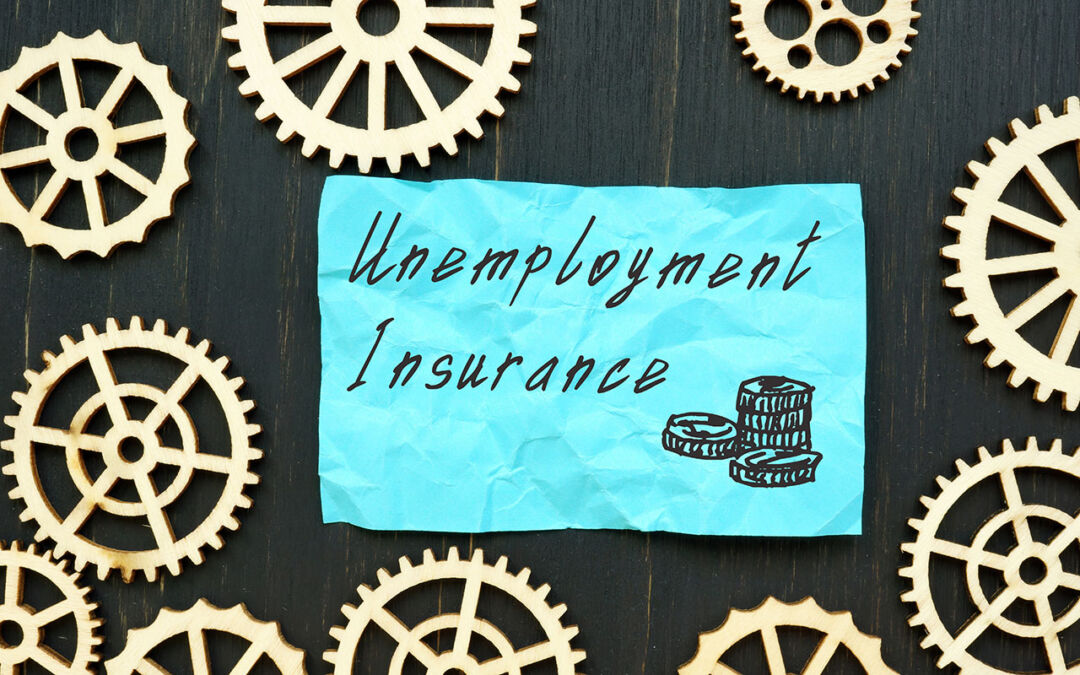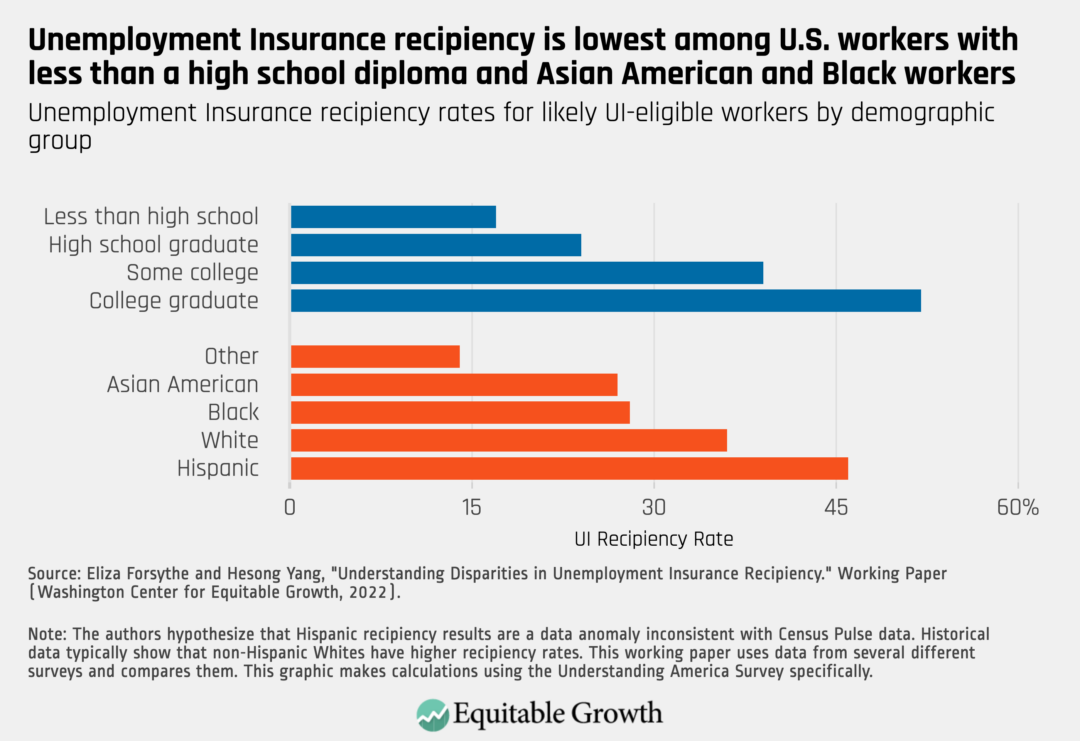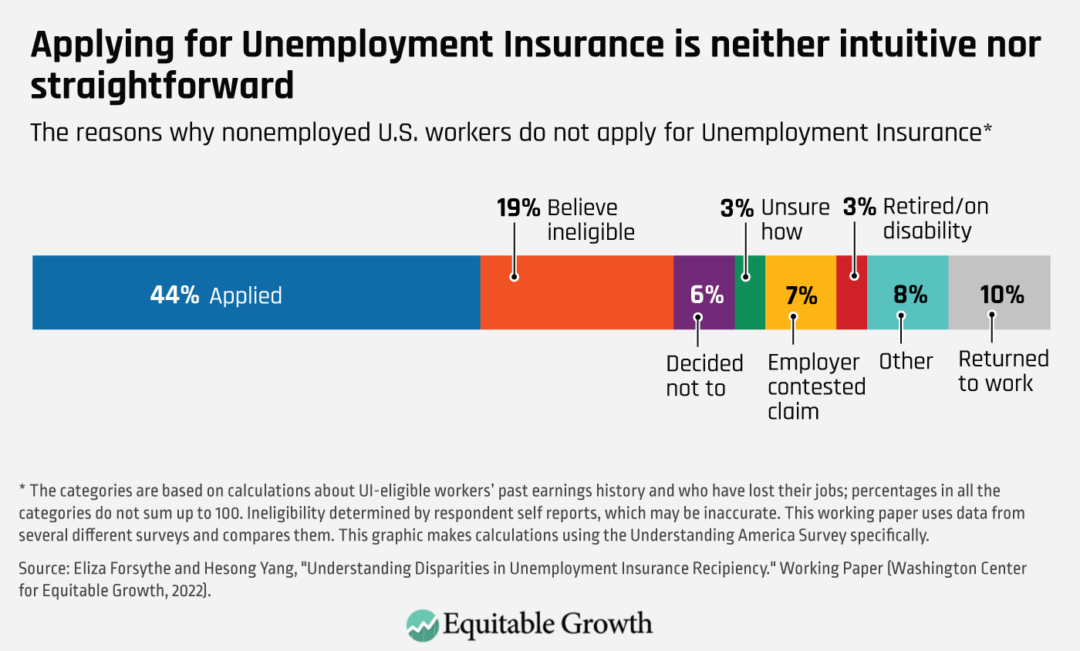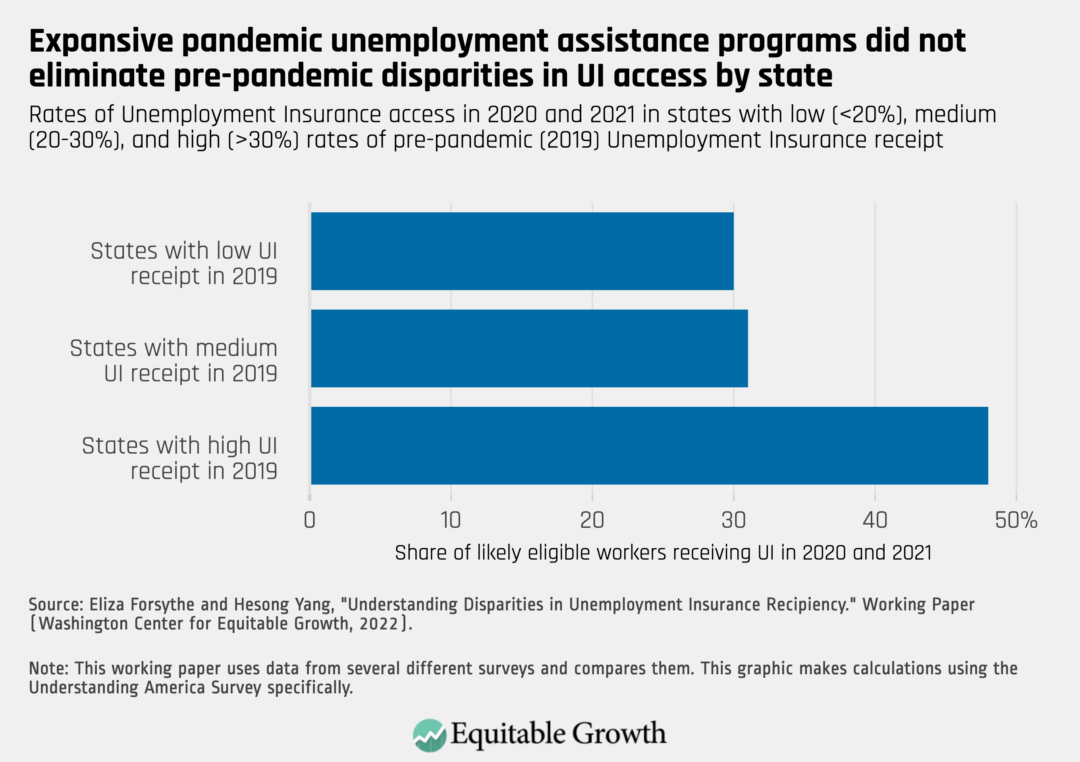COVID-19 recession and ensuing economic recovery reveals why Unemployment Insurance fails to reach marginalized U.S. workers

Policymakers at the state and federal levels of government in the United States who are steeped in the nation’s Unemployment Insurance system are well aware that many unemployed workers fail to access this critical income support program. Since the Great Recession of 2007–2009, attention on the demographic disparities in accessing these joint federal-state programs has grown. Research consistently finds that members of marginalized racial and ethnic groups and people with lower levels of education and income are far less likely to tap into Unemployment Insurance when they lose their jobs through no fault of their own than their more-advantaged counterparts in the U.S. workforce.
These problems faced by marginalized workers when dealing with the nation’s Unemployment Insurance system undermine U.S. economic growth and prosperity. A key role of the UI system during a recession is to provide income support to individuals who have lost employment, automatically reducing the severity of the recession. If Unemployment Insurance does not reach these individuals, then disadvantaged communities and the economy as a whole suffer. Yet policymakers and academics alike debate the reasons why these marginalized groups of U.S. workers are less likely to receive Unemployment Insurance when they lose their jobs.
Some say it’s because low-income workers have less incentive to apply for Unemployment Insurance since the income support they receive if they successfully apply is too meager. Others argue that differences in eligibility status for the income support program, due to the kind of jobs lost by marginalized workers is the problem. And still others say union membership is pivotal in determining which workers tap the UI system. Finally, structural disparities in the design of the UI system mean that low-earning, gig, and seasonal jobs are often excluded from UI eligibility, disproportionately excluding disadvantaged workers.
Much attention has been paid to how the dramatic COVID-19 recession of 2020 and ensuing economic recovery sorely tested the nation’s Unemployment Insurance system. But changes to the UI system’s eligibility criteria enacted by the U.S. Congress in response to the crisis also made it far easier for marginalized racial and ethnic groups and people with lower levels of education and income to gain access to this key income support program amid the sharpest rise in unemployment since the Great Depression more than 70 years ago.
Were these changes to eligibility requirements enough to erase the demographic disparities that have plagued the UI system for so long? My new working paper with Hesong Yang at the University of Illinois Urbana-Champaign, “Understanding Disparities in Unemployment Insurance Recipiency,” examines these disparities in UI recipiency and the policy experiment that occurred when pandemic-era UI programs granted eligibility to workers who did not satisfy traditional UI eligibility criteria. We investigate whether these changes, in addition to increases in UI income support to all workers, were enough to close disparities in access.
We conclude from our analysis of pre- and post-COVID-19 recession data that even with greater access to Unemployment Insurance before and after the recession, members of disadvantaged demographic groups continue to be less likely to access this income support program than their more-advantaged counterparts. Specifically, we find:
- Black and Latino workers receive Unemployment Insurance at lower rates than White non-Latino workers.
- Younger workers access Unemployment Insurance at lower rates than older workers.
- Less-educated workers are less likely to apply for Unemployment Insurance than workers with higher levels of education.
- Heterosexual workers are more likely to access Unemployment Insurance than lesbian, gay, and bisexual workers.
- Citizens access Unemployment Insurance at higher rates than noncitizens.
- People who are highly affected by stress are less likely to receive Unemployment Insurance than people who are less affected by stress.
- Union members are more likely to receive Unemployment Insurance than nonunion members.
Crucially, many of these groups that are less likely to receive Unemployment Insurance are the same groups that were more likely to lose work during the pandemic. Thus, disparities in access to UI benefits further exacerbate inequalities in the labor market. (See Figure 1.)
Figure 1

We find in our research that the two greatest barriers for workers to access Unemployment Insurance are incorrect information about their eligibility and uncertainty about how to apply for this key income support—at one of the most critical times in workers’ livelihoods. For all demographic groups, incorrect beliefs about eligibility are the key reason eligible individuals did not apply, with a smaller role for being unsure how to apply, in particular for younger workers and those without a high school degree.
In our analysis, we are careful to focus on individuals who are very likely to be eligible for UI benefits. Thus, these mistaken beliefs about ineligibility are largely incorrect. We find a similar pattern both before and during the pandemic, indicating that poor knowledge of the UI system is an enduring issue.
These findings are important as policymakers in Washington and in statehouses around the country assess the pandemic UI programs and look toward longer-term structural reforms. Our findings suggest expanding eligibility and increased benefit levels are insufficient to reach all eligible workers. Rather, states need to be more proactive in identifying potentially eligible workers and providing them with information and assistance. (See Figure 2.)
Figure 2

The U.S. Department of Labor’s recent pilot program to provide UI “navigators” to help potentially eligible workers navigate the UI system is an important step in the right direction. I encourage states to continue to innovate in finding ways to identify potentially eligible workers and target information and assistance to these individuals. Such policies offer an opportunity to target assistance to disadvantaged groups and to narrow disparities in UI receipt.
Although we document that states with historically low UI recipiency rates continue to have lower recipiency rates during the pandemic, these state differences are unable to explain the differences across demographic groups. Instead, disparities in UI recipiency are a problem for all states, even those that are more successful at providing high levels of access to benefits overall. Thus, all states should work to improve equity in their UI systems, a perspective that has been embraced by the U.S. Department of Labor. (See Figure 3.)
Figure 3

In short, this paper shows that even with the loosened eligibility requirements and increased benefit levels during the COVID-19 pandemic, workers from disadvantaged demographic groups were less likely than workers from other groups to access Unemployment Insurance. For our nation’s UI program and other parts of our social infrastructure tied to employment to work effectively and efficiently for all workers, we must make sure that all workers are aware of the program and can apply for it easily.
— Eliza Forsythe is an assistant professor of economics at the University of Illinois Urbana-Champaign.






